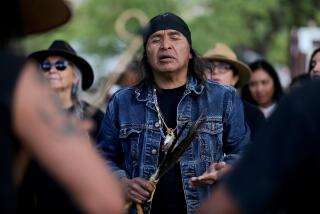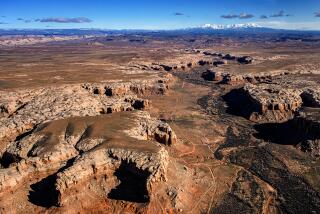Obama designates two new national monuments in the West
Further burnishing his environmental legacy, President Obama on Wednesday designated two new national monuments in rugged areas of Utah and Nevada — places that have deep cultural importance for Native Americans but that have become flashpoints in the debate over control of public land in the West.
The larger and perhaps more controversial of the two, the Bears Ears National Monument in southeastern Utah, encompasses 1.35 million acres of desert and canyons that are ancestral lands of several Indian tribes, including the Navajo Nation, whose reservation is just to the south.
Now, members of the Navajo, Hopi, Ute Indian Tribe, Ute Mountain Ute, and Zuni tribes, all of which pushed for the designation, will serve on what the administration described as an “unprecedented” special commission that will advise the federal government on how to protect the area while also ensuring access so tribal members can collect traditional medicinal plants and perform tribal ceremonies.
While both national monuments will be open for recreation, their designation means they will be better protected from development such as mining and oil and gas production. In the West, where half of the land is controlled by the federal government, many states and elected officials have long accused the government of putting up barriers to local economic development.
Yet on Wednesday, Russell Begaye, the president of the Navajo Nation, invoked history older than any government, saying that the area had provided food and sanctuary to tribes for millennia.
“These places — the rocks, the wind, the land — they are living, breathing things,” Begaye said.
The monument, which is directly south of Canyonlands National Park, is smaller than the 1.9 million acres the tribal groups had sought but larger than the 1.2 million acres that Utah’s congressional delegation had proposed for protection under legislation that has stalled in Congress.
Begaye said the tribal coalition was elated by the designation.
“That area that we most want is fully covered by the 1.35 million,” he said.
Obama also designated the Gold Butte National Monument, 300,000 acres along Nevada’s border with Arizona that is between Lake Mead, a crucial reservoir for the drought-stricken Colorado River, and the Grand Canyon. The administration said the area holds important tribal sites as well as historic ranching structures and sites related to early Spanish settlements.
It is near the ranch of Cliven Bundy, whose family led standoffs with the government in Nevada in 2014 and at Oregon’s Malheur National Wildlife Refugue this year, protesting what it said were unfair federal land policies.
The administration said Wednesday that both monument areas had been subject to vandalism and that the designation would bring them greater protection. It also said the Gold Butte National Monument would improve “climate resilience” by preserving corridors for wildlife to travel.
Obama said in a statement that the monuments would “protect some of our country’s most important cultural treasures, including abundant rock art, archaeological sites, and lands considered sacred by Native American tribes” and “ensure that future generations are able to enjoy and appreciate these scenic and historic landscapes.”
Sen. Harry Reid of Nevada, a Democrat and the departing minority leader, has long pushed for the Gold Butte designation. On Wednesday, he called Gold Butte “quintessential Nevada,” with landscapes “unlike anything else in the world.”
Critics said the designations would stir further resentment among people angry about federal land policy. About 65% of the land in Utah is owned by the federal government.
Rep. Jason Chaffetz (R-Utah) said the president’s “unilateral decision to invoke the Antiquities Act in Utah politicizes a long-simmering conflict” and “threatens to further inflame controversies that were near resolution.”
Using executive power under the Antiquities Act of 1906, the president has designated more than two dozen national monuments, totaling more than 550 million acres, though the vast majority of that area is protected water.
As they have with other conservation measures enacted at the end of his administration, the designations on Wednesday raised questions about whether his Republican successor, Donald Trump, may try to reverse them.
Christy Goldfuss, managing director at the White House Council on Environmental Quality, noted on Wednesday that no president had reversed a previous president’s monument designation and that the act does not specify the authority to do so. Yet Goldfuss conceded that Congress, now under Republican control, has the power to change the law.
Goldfuss noted that Bears Ears had been considered for protection since the 1930s. Despite that history, Chaffetz called the designation a “midnight move.”
“We look forward to working with President-elect Trump to follow through on his commitment to repeal midnight regulations,” Chaffetz said. “We will work to repeal this top-down decision and replace it with one that garners local support and creates a balanced, win-win solution.”
ALSO
An old rule may save the Rose Parade from getting rained on
Poodle owner accused of slitting throat of pit bull that killed his dog
1 dead, 17 injured in Anaheim crash involving car and transit bus
UPDATES:
4:25 p.m.: The story was updated with additional context.
4:05 p.m.: The story was updated throughout with additional details and context.
The story was originally published at 2:33 p.m.
More to Read
Start your day right
Sign up for Essential California for news, features and recommendations from the L.A. Times and beyond in your inbox six days a week.
You may occasionally receive promotional content from the Los Angeles Times.







